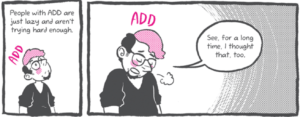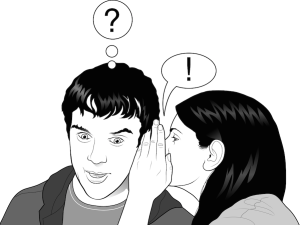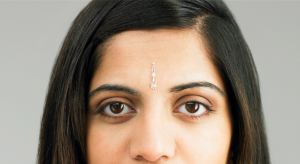We’ve all seen them. Articles that tell us all about how we’re appropriating someone else’s culture.
We’re told that if we’re not Black and we dreadlock our hair or if we’re not Native American and we wear feathered headresses on Halloween, we’re racist.
But what if we’re not trying to be racist? What if we’re trying our best not to be?
What can we actually do if we have good intentions?
If you have these feelings or questions, you’re not alone. As an Ethnic Studies teacher, I encounter these questions from students every single time I bring up cultural appropriation.
Because while we know cultural appropriation exists and that we shouldn’t do it, many of us remain at a standstill when it comes to prevention. After we read all the articles and have all the hard conversations, we frequently find ourselves aimlessly asking: what now?
You’ve probably thought long and hard about cultural appropriation. You know what it is and why it’s a form of racism. Maybe you even called out a friend or two.
But the question remains, how can you stop yourself from culturally appropriating?
My favorite time to teach Ethnic Studies is Halloween. Why? Because on no other holiday does Target literally sell cultural appropriation to the masses.
Halloween shows us that stereotypes and marginalization are related and worse yet, still exist. And we make little kids wear examples of it.
It’s low key the easiest day of the year to do my job.
After my lecture a few years ago, I had a white, cis, straight male student push back hard against what I was saying about cultural appropriation. He said that after an hour of our lesson, he still didn’t really get how it was different from cultural exchange. And he requested a meeting.
Two hours into our meeting, he asked me the question I’ve been trying to figure out ever since:
“Okay, honestly what I’m looking for here is an equation. I’m an engineer and I do well with formulas. So can you give me one? A mathematical equation of how not to be racist?”
I laughed.
In his face.
Partially because I can be mean, but mainly because an equation doesn’t exist and the idea of one is silly. If there’s one thing I’ve learned after almost 10 years of research, it’s that knowing what is or isn’t racist is not a hard science.
But he asked a super valid question.
I totally get the impulse to ask for a formula, because no one wants to be embarrassed by their ignorance.
So while I don’t have an equation, I did take the aforementioned decade to think about this stuff, which means the very least I could so is create a list of Ways-To-Tell-If-Something-Is-Cultural-Appropriation-Before-Actually-Appropriating.
Below are helpful questions you can ask yourself. Because while many of us know about cultural appropriation, we’re still at a loss at how to not do it.
And let’s be real, we need to learn how to not do it because no one wants shade thrown at them for showing up at a party in yellowface.
So maybe while you’re shopping, during Coachella and before yoga class, take a minute to ask yourself the following questions.
1. To What Ethnic/Racial/Cultural Group Does the Practice or Artifact Belong?
The answer involves, yes, research.
And before you go H.A.M on me for making you do more work, allow me to remind you that you’re probably reading these words on a tiny little screen in the palm of your hand in an Uber — or maybe even on the toilet. It would be super easy to simply open up another tab.
Here’s what the practice looks like in real time.
Girl sees a person wearing dreadlocks or a kimono, appreciates them, and thinks about how they would look on her. Girl Googles “history of dreadlocks/kimono” and makes an informed and compassionate decision.
It’s as simple as knowing the origins of a cultural practice be it clothing, hairstyle, or food. In this case, knowing is 1/5th of the battle.
There’s also step two, which is arguably the most important. Then again, I’ll probably say that about all the steps.
2. How Is the Group that the Practice or Artifact Belongs to Oppressed?
After you’ve consulted the all powerful Googs, take it one step further and move it over to Wikipedia. After you figure out what community the practice comes from, read up a little bit on how they’re oppressed.
Because we must not only be aware of origins and history but also of present day conditions for marginalized communities. I usually tell my students code words are not enough. Let me explain what I mean by code words.
I grew up going to Bible school, or rather, I grew up falling asleep in Bible school. But whenever I would get caught and be forced to answer a question, I knew I could always say “Jesus” or “God” and be right.
In Ethnic Studies, students who fall asleep can often wake up and say “racism” or “colonialism.” And while these code words are not enough to get you an “A” at UC Berkeley, they actually are enough to substantiate refraining from cultural appropriation.
The minute you see any of the code words in that Wiki – words like slavery, colonialism, or genocide – go ahead and back it up, because a huge part of cultural appropriation is how historical patterns replay themselves in the current day.
For instance, it seems like every hipster restaurant in Oakland sells a Vietnamese sandwich. These places profit off of something that has cultural significance to my Vietnamese community. At the same time, parts of the city where lots of Vietnamese folks live are being deliberately gentrified.
So hipsters and techies get to extract the food/culture that is profitable while displacing and further marginalizing the people from whom it originates. Sound familiar?
Colonization worked in a very similar way to extract natural and human resources from Vietnam to enrich foreign countries while oppressing the Vietnamese people themselves.
This historical pattern manifests itself today in the luxury tower being built in the Eastlake area of Oakland.
So if you’re contemplating wearing a “Pocahontas” costume to Burning Man, but you find out that Native American children literally had their indigenous culture beaten out of them, move onto step 3.
3. Do You Benefit from Doing This? How?
We are all susceptible to popular rhetoric. It seems like everything from news media to Macy’s ads tell us that clothes are just clothes and music is meant for everyone.
The thing is, culture is how communities of color most frequently find and express our history, our resilience and identities. Which means your racial identity and privilege matters when you wear, listen or perform other cultures.
We’re not colorblind, post-racial, or any of that other bullshit that’s associated with President Obama’s inauguration — which means you need to ask yourself some hard questions around why you want to wear that Native print bikini.
Are you using a bindi to be trendy? Getting box braids ’cause it’s cool?
History matters.
Communities of color are too often pillaged for our cultural value while at the same time being stigmatized and devalued as people. And while it can feel hard to make space for honoring and respecting someone else’s sacred cultural practices — especially when we find it beautiful or compelling — that’s exactly what we need to do.
What does this look like when someone thinks the art is cool, but not the people with whom it originates?
The easiest example is hip-hop. Remember Iggy Azalea? The white lady who couldn’t flow yet got all the money and props for what is a quintessentially Black cultural practice with absolutely none of the oppression that comes with being Black?
Yeah, it looks like that.
I think we can all agree nobody wants to get the clapback Kylie Jenner got for her braids or Katie Perry did for that redonk yellowface at the AMA’s.
So ask yourself the hard questions about your intentions and be honest about the answers. Believe me when I say it will save us all a lot of grief. And tweets.
If you’re appropriating a cultural thing literally because your friends are doing it or it was on an episode of Girls . . . You. Need. To. Check. Yourself.
4. Why Might It Make Someone Uncomfortable?
Here’s where I get to cheat by drawing from all the other folks who wrote about this before me. Countless people have discussed the ways in which the appropriation of dreadlocks, ethnic food trends and prints are problematic, questionable, and as as we say out here in the Bay, plain ole’ bootsy.
A little empathy might be helpful here. Imagine you’re a part of a community that has been stigmatized for being any of the following: feeble-minded, insane, criminal, mentally or physically defective (these are actual legal categories applied to Asians).
Then suddenly one thing you do, eat, or wear gets taken up and celebrated by a community with a hell of a lot more money, visibility and power than you but gives negative twenty fucks about you, your culture, or its value.
Would you be pissed?
Yes? Good answer. Me too.
So if you can see even just the vague outline of the possibility that someone, somewhere could be even slightly offended by your consumption of their cultural food/practice/thing, don’t do it.
Because really, do you want to be that person?
5. What Makes It Possible for You to Engage with this Practice, Tradition, or Material?
Off the bat, if you bought something from Urban Outfitters, it’s probably cultural appropriation.
Selling flasks with Native American motifs while the community it comes from lives with high levels of alcoholism as a result of colonialism and poverty is not just the worst form of cultural appropriation, it’s straight up bad marketing. #SorryNotSorry.
Step number 5 requires a similar move to step 3. If you bought the henna from a beauty store you’re 1) probably not doing it right and, 2) economically privileged enough to rip off a culture using consumerism.
Asking yourself how you’re engaging with something is another way of asking whether it is your economic or social privilege that allows you to engage with the cultural thing in the first place.
For instance, did you have the the cash to travel to New Zealand? Is that why you want to get indigenous tattoos to commemorate your visit? If so, I’d suggest rethinking that move.
***
Finally, as Oprah says, maybe “doubt means don’t.” This is hella hard, as we say in the Bay Area.
No one can be certain how to avoid cultural appropriation cause it’s already confusing to figure out when it’s happening in the first place.
And we will inevitably fuck up. Because this stuff is complicated and the lines are never clear.
But that doesn’t mean we shouldn’t try to abstain from cultural appropriation.
I mean, if I gave up on school because it was hard, I probably would have quit in kindergarten when they asked me to fold up my nap time mat into an impossible little square that refused to fit into my cubby.
Racism is deeply engrained in all of us and impacts how we engage with each other every day.
It affects everything, from what it’s like to buy a car or to get a job, or even bid on a damn eBay auction.
Which means that when it comes to cultural appropriation, I encourage folks to be conservative not in order to induce fear, but to refrain from further harming communities of color.
If you’re unsure, just don’t do it.
Put down the bindi, headdress, or kente cloth. Save it for a moment in which you can be certain you’re not being an inadvertent douchebag.
And trust me when I say it will pay off in the number of side eyes and shade you won’t receive.
[do_widget id=’text-101′]
Kim Tran is a Contributing Writer for Everyday Feminism. She’s also a collective member of Third Woman Press: Queer and Feminist of Color publishing. Her academic and activist commitments are to laborers, refugee and queer communities. She facilitates workshops on uprooting anti-black racism in Asian American communities. She is finishing her Ph.D in Ethnic Studies at UC Berkeley where writes on race, gender and economics. Her work has been featured on Black Girl Dangerous, Nation of Change and the Feminist Wire. She can be found in any of these capacities at www.kimthientran.com.
Search our 3000+ articles!
Read our articles about:
Our online racial justice training
Used by hundreds of universities, non-profits, and businesses.
Click to learn more





















